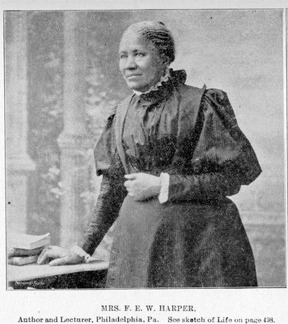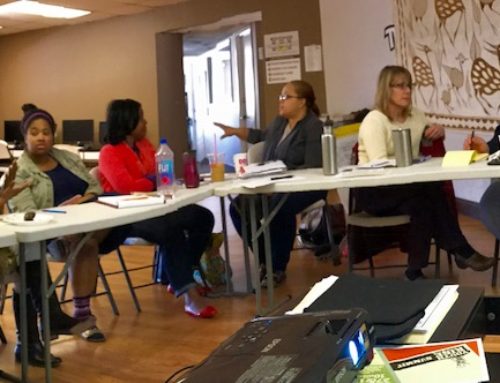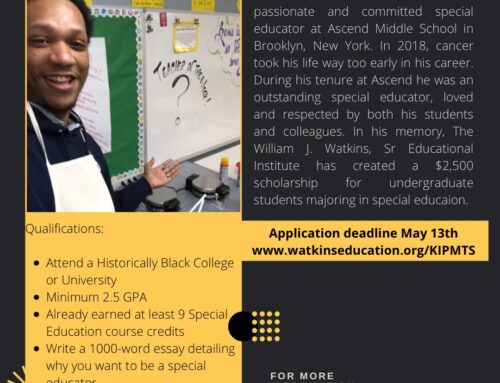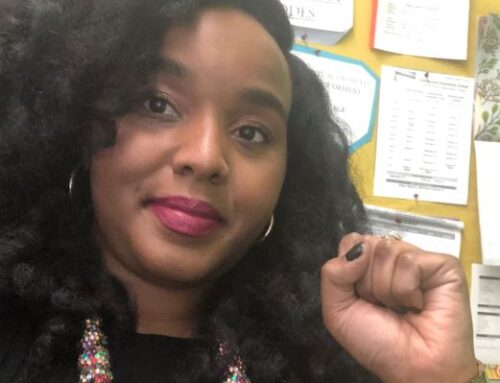New Black Leadership
By the middle of the 1880’s there was a shift in Baltimore’s African American leadership. The Republican hold on the black community was beginning to be reexamined. African Americans questioned the propriety of supporting candidates who only used their support to get into office and once elected did not follow through on their campaign promises. Also, the “old guard” of leaders like Isaac Myers and those following the United and African Methodist traditions were challenged by the growing Baptist influence. At the forefront of this new wave of Baptist leadership was the Reverend Harvey Johnson of Union Baptist Church. The new leadership of men, like the Baptist ministers Rev. Harvey Johnson and Rev. William Alexander, were taking the lead in demanding better education for their children. They concluded that white teachers did not care about the black children in the “colored schools,” the new leaders wanted black teachers in the black schools to teach black children independence, self sufficiency and racial uplift. They wanted their children to continue to develop the shared identity and purpose that had been developed in the antebellum era. They were arguing for the ability to create cultural capital using the public schools to do so.
On this account the “old guard” black leadership and the new radical leadership were on the same page; their main difference was over tactics and strategy. The “old guard,” whose members had a history of working with sympathetic whites, favored a more moderate policy of petitioning and letter writing. The “new radicals” wrote letters, petitioned and sought the aid of sympathetic whites, but they also advocated a steady campaign of agitation and legal action. They wanted to compel the white political leaders to act while the “old guard” was more willing to wait for them to act.
Harvey Johnson was born on August 4, 1843 in Fauquier County, Virginia. His parents, Thomas and Harriet Johnson, were both enslaved on a local plantation as was he. At the close of the Civil War the Johnsons moved to Alexandria, Virginia. They joined the Alfred Street Baptist Church, one of Alexandria’s more prominent African American churches, where Harvey attended private school for a short time. Johnson also briefly attended a Quaker school in Philadelphia. In 1868 he entered Wayland Seminary in Washington, DC where he graduated with honors in 1872. After graduating, Johnson preached in Hancock, Maryland and Loudon County, Virginia under the auspices of the American Baptist Home Missionary Society. He was also a teacher and sold Bibles before receiving a call to preach from Union Baptist Church in Baltimore, Maryland in November of 1872. Reverend Johnson accepted the call and moved to Baltimore at the age of 29 where he began a long career as one of Baltimore’s most effective religious and civic leaders.
When Rev. Johnson came to Baltimore there were less than five hundred African American Baptists in the state. Union Baptist Church, which was established in 1852, had a membership of two hundred and sixty two. Rev. Johnson’s work in building Union Baptist Church exemplified his attitude towards racial uplift. He believed in black independence and self-reliance. He refused monetary aid from the Union Association, the white Baptists of Maryland, which aided the only two African American Baptist Churches in the state at the time. Johnson stated that “a church must be self-supporting to be self-respecting.” By 1880 Rev. Johnson increased the membership of Union Baptist to nearly 2000, raised over $20,000 for a new church building, ordained ministers to establish other churches, established a Sunday School and several missions throughout the state. Union Baptist became the leading black Baptist church in the state of Maryland. Rev. Harvey Johnson’s philosophy of self-reliance, independence and racial uplift gained him a reputation as a fiery, new militant voice which demanded equal rights and full access to American democracy.
Rev. Johnson believed that blacks should have all the rights American citizens were granted by the Constitution. Equal education was among the rights that he and Baltimore’s black community fought for most vehemently. Rev. Johnson and Rev. John Handy founded the Colored Equal Rights League on February 8, 1880. One of its main goals was to force the
School Board to hire black teachers for the City’s “colored schools.” The league ceased operation on 1884 having met with little success.
Rev. Johnson continued to push for African American educational rights, as well as other rights, when he and four other prominent Baptist ministers established the Mutual Brotherhood of Liberty of the United States of America on June 22, 1885. The goals of the organization were set out in its constitution as follows:
That we band ourselves into a body to be known by the name and style of Mutual United Brotherhood of Liberty, of the United States of America, and that the avowed purpose of said Brotherhood shall be to use all legal means within our power to procure and maintain our rights as citizens of this our common country.
Rev. Johnson was elected president and Rev. William M. Alexander, pastor of Sharon Baptist Church, was elected secretary. Their first public meeting was held in the fall of 1885 and lasted for three days. Frederick Douglass was the main speaker. Among the many demands the Brotherhood espoused at the meeting was a call for the improvement of “colored school” facilities and the hiring of black teachers. Rev. Johnson was very clear in expressing his position on African American educators being barred from the City’s public schools:
Right here, in the city of Baltimore, we are not allowed to teach our own children in the colored schools. I hold that this is a gross injustice. Shall we forgive it while the injustice continues? We have separate schools, and not a single colored teacher allowed
to teach, although they hold certificates qualifying them for such a position.
The Brotherhood also established a Committee on Education chaired by Rev. Alexander, who was born in Fredericksburg, Virginia in 1854. He came to Baltimore in 1870 and studied for the ministry under Rev. Johnson at Union Baptist Church. He attended Wayland Seminary in Washington, DC in 1876 and was the pastor of Sharon Baptist Church from 1882 – 1919. He was also the editor of three Baltimore based newspapers, The Voice, The Home Protector and The Afro American. He used these papers as outlets for airing the concerns and demands of the black community. The Education Committee was responsible for creating the plan of action to force the public schools to meet their demands. Among the demands were the hiring of black teachers, expanding the “colored high school” curriculum from two years to four years, increasing the number of primary and grammar schools and improving the physical conditions of the “colored schools.” As chairman of the Education Committee, Rev. Alexander played a key role in accomplishing these goals.
The Education Committee established the Maryland Educational Union, which served as an extension of the Brotherhood. It was comprised of black teachers, parents, graduates of the “colored high school,” black attorneys, and clergy. The Union continually agitated and demanded equitable educational facilities while the Brotherhood of Liberty backed their demands with the threat of legal action. This strategy ultimately proved successful in moving the black agenda forward, specifically by getting black teachers hired in the “colored schools,” expanding the “colored” high school and the addition of a new primary school in the northwest area of the city.
On May 3, 1887 the Maryland Educational Union held a public meeting at which they vowed to increase the political pressure on the City Council to force them to act on the demand for black teachers and encouraged blacks to do the same by writing letters and petitioning. The following day the City Council passed an ordinance authorizing the School Board to hire black teachers in “colored schools.” However, they included a provision that no black and white teachers could teach in the same schools. Since the “colored schools” already in existence had white faculties no black teachers could be hired until there was a totally new “colored school” built or opened in order for black teachers to be hired by the School Board. The school board did not have any plans for the addition of new black schools. City officials continued to play politics with African American education. While there were no immediate gains from the ordinance it was a stepping stone leading to the hiring of black teachers. Blacks, however, continued to persevere and used the new ordinance to eventually have a new school built and staffed by African Americans.
In 1887 there were only eight “colored schools,” all run by whites. With the growth of Baltimore City through annexation of Baltimore County land in May 1888 three “colored schools” were incorporated into the City’s public school system. As part of the provisions of the act annexing the Baltimore County territory all of the teachers in the schools included in those boundaries were grandfathered into the Baltimore City Public School System and could not be terminated. This included the three “colored schools” and their “colored” teachers. It had been the practice of the Maryland counties to only hire African American teachers to teach in their “colored schools.” By 1888 many of those teachers, particularly in Baltimore County, came from Baltimore City. The three “colored schools” that were incorporated into the city system were: “Annex Colored School No. 1,” on Merryman’s Lane near York Road; “Annex Colored School No. 2,” on Reisterstown Turnpike near Arlington; and “Annex Colored School No. 3,” at 11 Mt. Olive Lane. There were six African American teachers already teaching in these schools and as the proviso of the May 1888 Annexation Act of the General Assembly stated they were grandfathered into the city’s public schools thus becoming the first “colored teachers” to work in the city’s schools since the firing of the Baltimore Association’s teachers in 1868. George W. Biddle was the Principal of “Annex Colored School No. 1.” Roberta Sheridan and Nannie Grooms were “Assistants” and there were 140 students. “Annex Colored School No. 2” only had one teacher, Annie O. Waters, designated as “Principal” with 27 students. “Annex Colored School No. 3” serviced 56 students with two teachers. They were Garrison D. Trusty, “Principal” and Edward E. Reed, “Temporary.” During the early history of United States public education the title “Principal” was the shortened version of “Principal Teacher.” The “Principal Teacher” was primarily responsible for delivery of instruction and to a much lesser degree administrative duties.
Attempts to locate biographical data on the original six black teachers were unsuccessful except for Roberta Sheridan, “Assistant” at “Annex Colored School No. 1.” Sheridan’s story provided some insight into how the other five teachers may have entered the city’s schools. Sheridan’s birth, marriage license, divorce proceedings, and 1910 census record gave different ages for her. They indicated that she was born in Baltimore sometime between 1862 and 1874. Her marriage license places her date of birth in 1864. The 1910 census places her birth year as 1872. Her death certificate lists her birth date as March 20, 1873. She attended the public “colored” grammar and high schools. The October 5, 1888 Baltimore Sun reported that she was a graduate of the “colored normal school.” This must have been a private school or perhaps the normal school created by the $10,000 legacy Nelson C. Wells left to the Baltimore Association for the creation of a normal school. Sheridan is listed as one of the twenty four African American teachers in the teacher eligibility list book of 1873 – 1885. She passed the licensing exam on November 12, 1881 with a “2nd Assistant Grammar or Assistant in Primary” endorsement. She along with three other African Americans passed the exam that year. A year earlier fifteen had passed the exam.
Edward E. Reed was the only other member of the original six African American teachers to appear on the 1873 – 1885 eligibility lists. He passed the exam on May 10, 1884 with an “Assistant in Colored School” endorsement. There was a listing for an “E.E. Reed” as a “1st Assistant in the Male Colored School” who passed the exam on May 9, 1885. This may be the same person. Reed may have taken the exam twice in order to qualify for the higher position of “1st Assistant in the Male Colored School.” If that was the case it raises the question of why he was hired as a “Temporary” teacher if he qualified as a “1st Assistant?” None of the other original teachers are listed in the eligibility lists with passing dates before 1888. Nannie Grooms is the only other one of the original six listed in subsequent years’ eligibility lists. She is listed in the 1885 – 1895 eligibility lists as being elected on June 26, 1896. The 1885 – 1895 eligibility lists did not indicate the teaching position the candidate was eligible to teach. Biddle, Trusty and Waters are not listed in the eligibility lists between 1873 and 1899. Nonetheless, these six African American teachers were the pioneers of African American pedagogy in the City’s public schools and their appointments to the “Annex Colored Schools” were a major step in the development of African American education in Baltimore.
The black community continued to challenge the school board and elected officials through letters and petitions. The Brotherhood’s strategy of agitation and legal action had worked to eliminate the “black laws” and to have African American attorneys admitted to practice law. They threatened to use the same strategy in the field of education. When Rev. T.R. Wilkins of the Second Christian Church suggested that black parents should attempt to enroll their children in white schools and once denied entry challenge the decision in the courts, the School Board and City Council acted by making plans to construct a new “colored” school.
The Brotherhood of Liberty and Rev. Alexander demanded that a new primary “colored school” be built in the northwest area of the city to meet the growing needs of that section. When the Brotherhood took their demands to the School Board in 1887 the Board denied the request on the grounds that there were not enough black children in the northwest area to warrant the construction of a new school building. Rev. Alexander organized the ministers and teachers in the northwest area to open new schools in their homes and churches to demonstrate that there was a need for a school in the area. He expanded the Sunday School at Sharon Baptist and opened a school with three hundred students and three teachers.
The City officials felt the pressure from the impending Brotherhood lawsuit and the clear need for additional black schools. They later appropriated funds to erect a new “colored” primary school at Carrolton and Riggs Avenues in the northwest section of the city. “Colored School No. 9” was erected in a predominantly white community. Notwithstanding the protests of the white community that their property values would be negatively impacted if the school was built at that location, the school opened in 1889 with an all black faculty of twelve teachers. The male and female divisions both had six teachers, with 321 and 330 students respectively. Three members of the male faculty transferred to “Colored School No. 9” from the Annex Schools. George W. Biddle transferred from “Annex Colored School No. 1” as Principal. Garrison D. Trusty transferred from “Annex Colored School No. 3” as Assistant. Roberta Sheridan transferred from “Annex Colored School No. 1” also as “Assistant 1st Grade,” which was a promotion from “Assistant” in the “Annex.” The three other teachers at “Male Colored School No. 9,” Ellen L. Anderson, Mary E. Taylor and Mary J. Camper were all newly appointed. Only Mary J. Camper was listed on the eligibility lists as Mary J. Cromwell. She passed the teacher’s exam on November 12, 1881 with “Assistant 2nd Grade” and “Assistant Primary” endorsements. The six teachers on the female side of the facility were Fannie L. Barbour, Principal, Nannie B. Grooms, Assistant 1st Grade, Gertrude C. Deaver, Violet R. Thompson, Fannie D. McCabe and Mamie Neal, all Assistants. Nannie B. Grooms was the only one of the original six “Annex Colored School” teachers to transfer to “Female Colored School No. 9.” She received a promotion to “Assistant 1st Grade” from “Assistant” at “Annex Colored School No. 1.” Barbour is the only one listed in the 1873 – 1885 teacher eligibility list as a “2nd Assistant Grammar” and “Assistant Primary.” She passed the licensing exam on November 12, 1881. Mamie Neal is the only teacher not listed on either list. Deaver, Thompson and McCabe were elected on June 28, 1889. No teaching grade was noted in the records.
In 1888 the School Board changed its teacher eligibility requirements. They raised the passing score on the teachers’ exam from 66 2/3 to 85. As a result very few candidates, black or white, were able to pass the exam. The School Board readjusted the passing score to 75 and Fannie Barbour was the first African American educator to pass under the new rules. Perhaps this is why she was appointed as Principal of “Female Colored School No. 9” and why Grooms was only promoted to “Assistant 1st Grade.”
Two major milestones were reached in 1888 and 1889 with the school board appointments of Baltimore’s first African American educators and the opening of the newly constructed “Colored School No. 9.” The two – pronged strategy of agitation and legal action by the Brotherhood of Liberty forced the School Board, City Council and Mayor to act. While these were major successes, African American educators were limited to the “Annex Colored Schools” and “Colored School No. 9.” The Brotherhood of Liberty and others working for equitable educational opportunities, were not satisfied with these victories. They continued to push for black teachers in all of the “colored” schools, for improvement of school facilities, equalized high school curriculum and the establishment of a manual training school to instruct black youth in skilled trades.
The Board of School Commissioners was still reluctant to turn over control of the existing “colored schools” to black leadership. It took almost twenty more years before the black schools were under the complete control of African American teachers. During that period, black Baltimorean’s continued to demand, and gain improvements in the public schools. In 1889 the curriculum at the “Colored High School” was equalized with the white high schools granting testimonials to its graduates. Until then the “Colored” high school only had a two year curriculum and the white high schools had a four year curriculum. More importantly however, was the granting of testimonials. Graduates of the white high schools with a high enough average were automatically eligible to teach in the city schools. With the granting of testimonials to black high school graduates they became eligible to teach in the “colored” city schools. Two additional Grammar Schools were opened in 1893, and in 1898 “M & F Grammar Colored School No. 4” was opened with an all black faculty. In 1896 a Manual Training School for African American males was opened. Many of these accomplishments came because of the continued agitation of members of the Brotherhood of Liberty.
The final steps in the long struggle to have black teachers admitted to teach in the city’s school system came in the last years of the nineteenth century. In 1895, an African American, Dr. J. Marcus Cargill, was elected to the City Council. One of Cargill’s first actions was to submit legislation that called for the replacement of white teachers in the “colored schools” with black teachers when they transferred or died. It is ironic that the only way to get African American educators into the school system was for blacks to argue for an even more pervasive system of segregation than the one already in existence. The political and social attitudes of the late 1890s did not allow any mixing of the races. Since the School Board did not allow integrated faculties in order for the African American community to accomplish its goal of increased African American teachers in the “colored schools” they argued in favor of segregated schools, including faculties. The City Council finally passed a watered down version of the original ordinance in 1896.
The school board effectively stalled the implementation of the “Cargill Ordinance” for over two years. In 1898 “Colored Primary School No. 2” was turned over to the control of an all black faculty. There were 16 teachers divided evenly between the “Male” and “Female” department. There were 654 students, 317 in the “Male Department” and 337 in the “Female Department.” The school taught grades one through four. H. Grafton Browne was the Principal of the “Male Department” and Estella M. Langley was Principal of the “Female Department.”
In 1899, with the election of “Progressive” Democrats, came a change in attitude towards African American educators. African American teachers were more widely accepted and not viewed as a threat to white superiority as long as they taught in black schools. The newly appointed Democratic Party controlled school board, under the direction of Mayor Thomas G. Hayes, moved forward and aggressively enforced the Cargill Ordinance. By 1902 African American teachers were teaching in over fifty percent of the Colored Schools and by 1907 African American teachers were in charge of all 27 of the “colored schools” providing education to more than 9,300 African-American students.






Leave A Comment